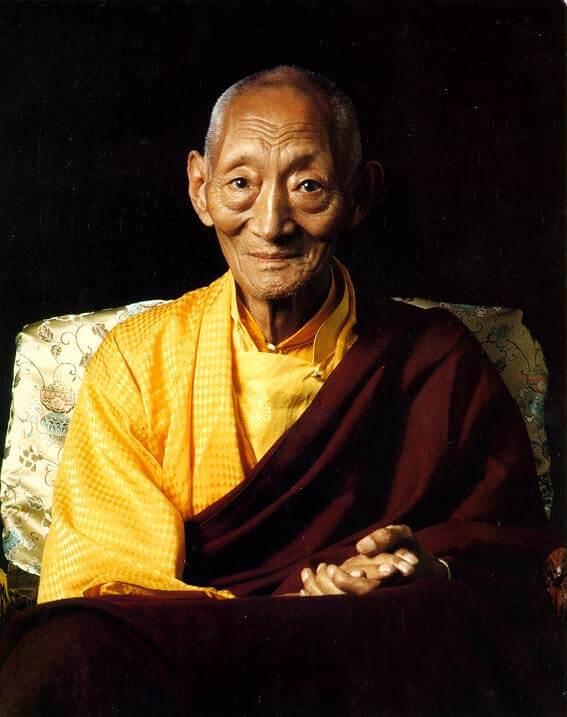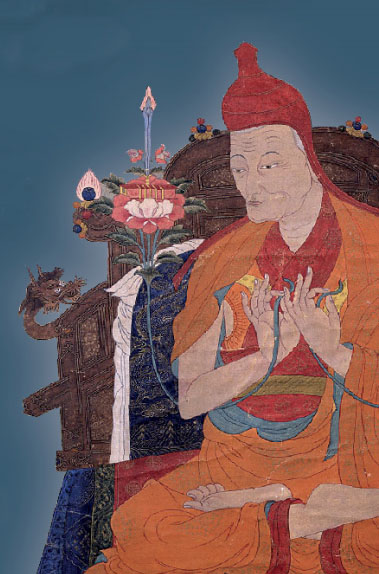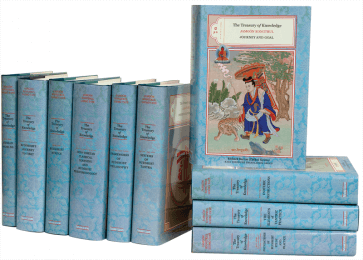Kalu Rinpoche and the Translation of The Treasury of Knowledge

Below Sarah Harding shares the story of how Kalu Rinpoche came to take on the task of translating Jamgon Kongtrul Lodro Taye's The Treasury of Knowledge, an immense feat that took the skills and dedication of many that will be treasured by all who are able to benefit from its work for years to come.
From Sarah Harding's preface to Book 8, Part 4.
Khyabjé Kalu Rinpoché visited Santa Fe, New Mexico in 1986 to consecrate the Bodhi Stupa that had been constructed at his dharma center. Many of his lamas and students were gathered for the occasion, as well as visiting teachers and the general public. It was a joyful reunion for many of us who were scattered in the ten directions and rarely had the opportunity to come together.
Although in no position to represent anyone, I nevertheless found myself inspired by the auspicious occasion to offer “our” everlasting translation service in whatever way he saw fit. I felt that much of the talent that Kalu Rinpoché himself had fostered in his students was not being put to use, and that naturally they were looking elsewhere for ways to be of service. But, I said, “we” would rather work for him, even—or especially—after he was gone. He simply nodded. I thought, how easy it is to express my deep gratitude in this way. Later during that same tour, Rinpoché did a radio interview in San Francisco in which he announced that he had formed a committee to translate the entire Buddhist canon! When he returned to the dharma center his eyes were sparkling with mischief and he demanded, “Now how many people know?”
That was how it began. Rinpoché bestowed the ambitious name of “The International Buddhist Translation Committee” (Dragyur Dzamling Kunkhyab) and sought to gather translators, scholars, and meditation masters of all Tibetan Buddhist traditions to work together. Luckily, he was talked down from the original idea of translating the Buddhist Canon, and chose instead the masterpiece by Jamgön Kongtrul Lodrö Tayé, The Treasury of Knowledge.
Hardly less daunting, it has taken many translators many years to begin to present an approximation of this great work. It started in Bodhgaya, the site of the Buddha’s enlightenment, with three-month translation conferences in 1987 and again in 1988. After that, Rinpoché decided to have the work continue throughout the year at his monastery in Sonada, Darjeeling. There, people were to “translate during the day and meditate on the nature of mind at night.”
After some years only the hardiest remained, eventually producing the first three books in the series. Kalu Rinpoché passed away in 1989 without seeing the fulfillment of his wish, just as he had warned on many, many occasions. Now the time frame seemed to stretch infinitely into the future, and most of us had other lives to lead in order to survive. Then Kalu Rinpoché’s worthy lineage successor, Bokar Rinpoché, Karma Ngedon Chokyi Lodrö, took up the cause. He hesitated to change Kalu Rinpoché’s game plan in any way, but the urgency called for practicality.
At a gathering in his monastery in Mirik, on the occasion of conferring the Shangpa Kagyu transmissions at the request of the young incarnation of Kalu Rinpoché, Bokar Rinpoché urged the translators to complete this work that had been so dear to his guru. He feared that at this rate it might not even be completed within the lifetimes of the very translators to whom it had been entrusted by Kalu Rinpoché.
With the generous and timely support of the Tsadra Foundation, a new phase of work began, with individual translators working on individual sections of the Treasury in their own homes and with all the amenities (such as electricity). Now with new direction, the remaining sections have been adopted by able translators and are well under way.

It was too easy to underestimate how much information Jamgön Kongtrul could pack into 189 pages, and to underestimate the depth and breadth of these esoteric practices. In truth, each of the sections in this current book deserves a separate treatment by a scholar-practitioner specialized in the particular lineage, with years of practice and study behind her. To accurately portray all the practice traditions in a way that does justice to Kongtrul’s presentation of them has stretched my abilities to the limit, though being thus stretched, I feel tremendously enriched and further enraptured. In any case, it was with the help and support of many others that I can now off er this effort, with the hopes that it will at least be a glimpse into the awesome inner world of these ancient traditions.



